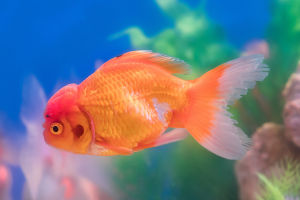The vibrant colors of the neon fish have captivated aquarium enthusiasts and casual observers alike.
These small, dazzling creatures are commonly found in freshwater aquariums and are known for their iridescent hues that seem to radiate light. However, have you ever wondered how these mesmerizing aquatic creatures acquired the name "neon fish"? Let’s delve into the origins of this fascinating name, exploring the historical and scientific underpinnings behind it.
A Glimpse into Taxonomy:
To comprehend the origin of the name "neon fish," we must first explore the realm of taxonomy. The neon fish belongs to the family Characidae, which encompasses a diverse array of freshwater fish species. Within this family, the neon fish falls under the genus Paracheirodon. However, the specific species responsible for the captivating name is the Paracheirodon innesi, more commonly known as the neon tetra.
Discovering the Neon Tetra:
The neon tetra, indigenous to the blackwater streams of the Amazon basin in South America, was first discovered by renowned French aquarium enthusiast and ichthyologist, Dr. George S. Myers, in the 1930s. Fascinated by its vibrant colors and delicate nature, Dr. Myers named the species "neon tetra" due to its striking resemblance to neon lights, which were a recent innovation at the time.
The Neon Connection:
The name "neon" draws inspiration from the noble gas known for its distinctive luminous properties. Neon lights, invented by French engineer Georges Claude in 1910, fascinated people worldwide with their vibrant hues and alluring glow. It is said that Dr. Myers, in an attempt to capture the luminosity of these lights within the context of the fish, christened the species "neon tetra." Thus, the name highlights the fish's remarkable ability to emulate the mesmerizing colors of neon lights.
Radiant Aesthetics:
The neon tetra's chromatic beauty is a key factor that contributes to the enduring popularity of this fish within the aquarium hobby. Its slender body is adorned with a shimmering silver-blue coloration that extends from its head to its tail. The lateral line of the fish, a distinctive characteristic found in many fish species, is accentuated by a vibrant, neon-red stripe that gives the fish its signature glow. This radiant stripe, which appears to illuminate the entire body of the fish, further reinforces the appropriateness of its name.
Evolutionary Significance:
Beyond the enchanting aesthetics, the neon tetra's vivid coloration serves an evolutionary purpose. In the wild, these bright colors act as a form of communication, enabling them to identify their own species, signal aggression or submission, and facilitate group coordination. These striking hues are a result of a combination of pigments within their skin and specialized cells called iridophores, which reflect light and enhance the neon effect.
Global Popularity:
Due to its vibrant colors, peaceful temperament, and ease of care, the neon tetra has become a highly sought-after species among aquarium enthusiasts worldwide. Its striking appearance adds a touch of brilliance to any freshwater tank, making it a popular choice for both beginner and experienced hobbyists alike. The name "neon fish" has transcended its scientific origins and become a widely recognized term within the aquarium community.


